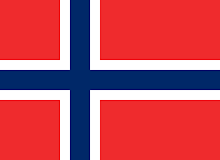Some of the laws Norway has for drinking are amusing. One such law is that people are permitted to buy a whole crate of beer but not one single bottle. Sometimes, a native is refused a drink at a bar while his friend from a neighboring town can drink as much as he wants. This is due to a tradition of fighting the evils of alcoholism that Asbjorn Kloster, a prohibition pioneer, brought about a century ago.
There are many strong traditions in Norway when it comes to drinking. Olav Tryggvason, a hero from Viking times, would get people drunk so he could burn their houses down without a fight if they refused to become Christians. The Vikings would often travel great distances just to get wine.
Distilling was first introduced by Archhishop Olav Engelbrektsson in Trodheim in 1530. Distilling apparatus soon became as common in households as pots and pans.
In the 16th century, it became forbidden to serve hard liquor on Sundays and holidays, which is still in effect today. Hard liquor was still made, first from grain, then from potatoes in the 18th century. Around this time, distilling also became illegal, but this law was repealed in 1816. Home distilling was ceased in 1848 when a law on the manufacture and processing of hard liquor was put into effect, but industrial distilling was still legal. Distilleries fell from 10,000 in 1848 to 40 in 1868. By 1851, consumption of hard liquor dropped from 32 pints per citizen to 12. Prohibition in Norway was put into effect from 1916 to 1927.
http://www.allscandinavia.com
http://www.allscandinavia.com
